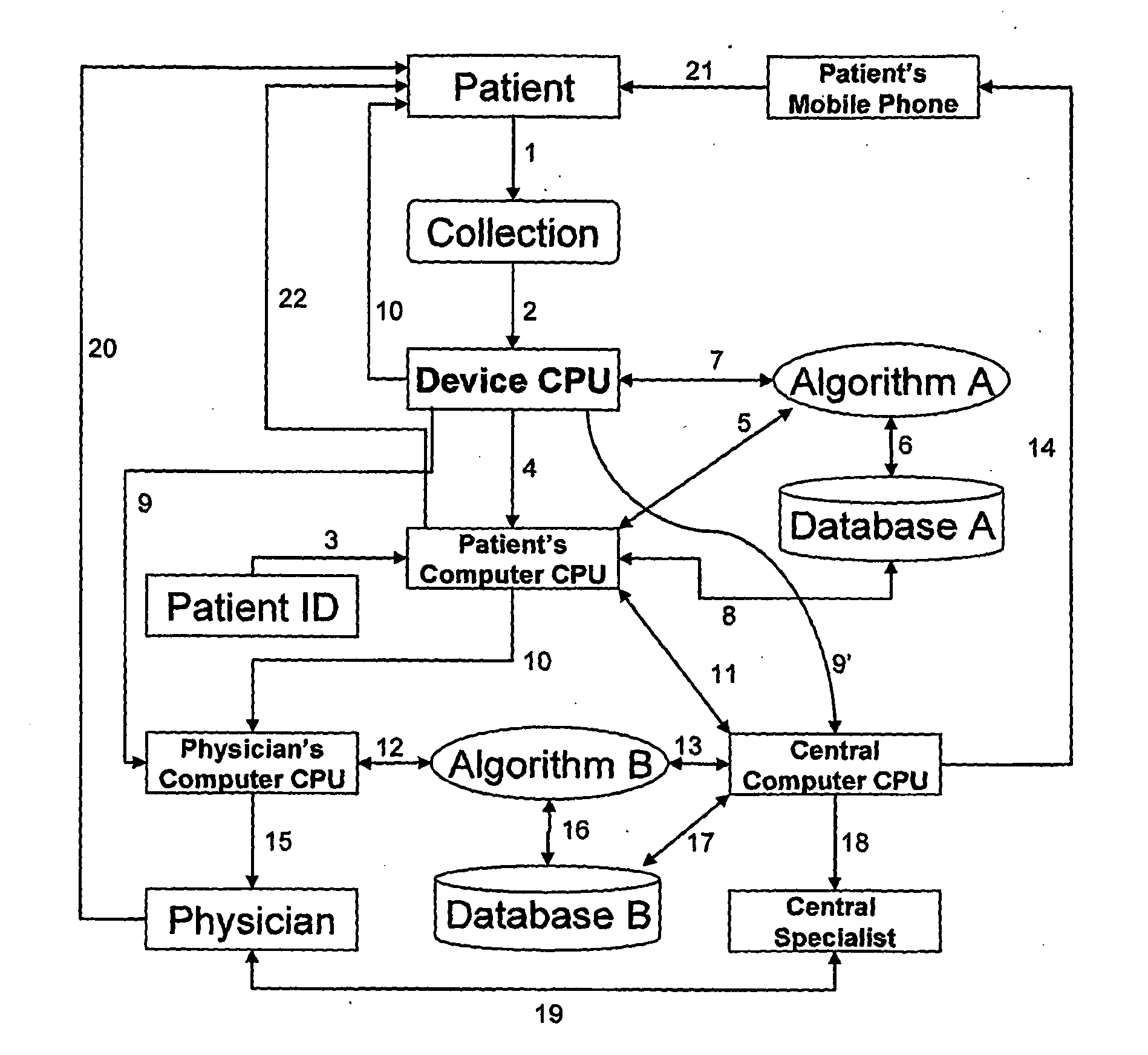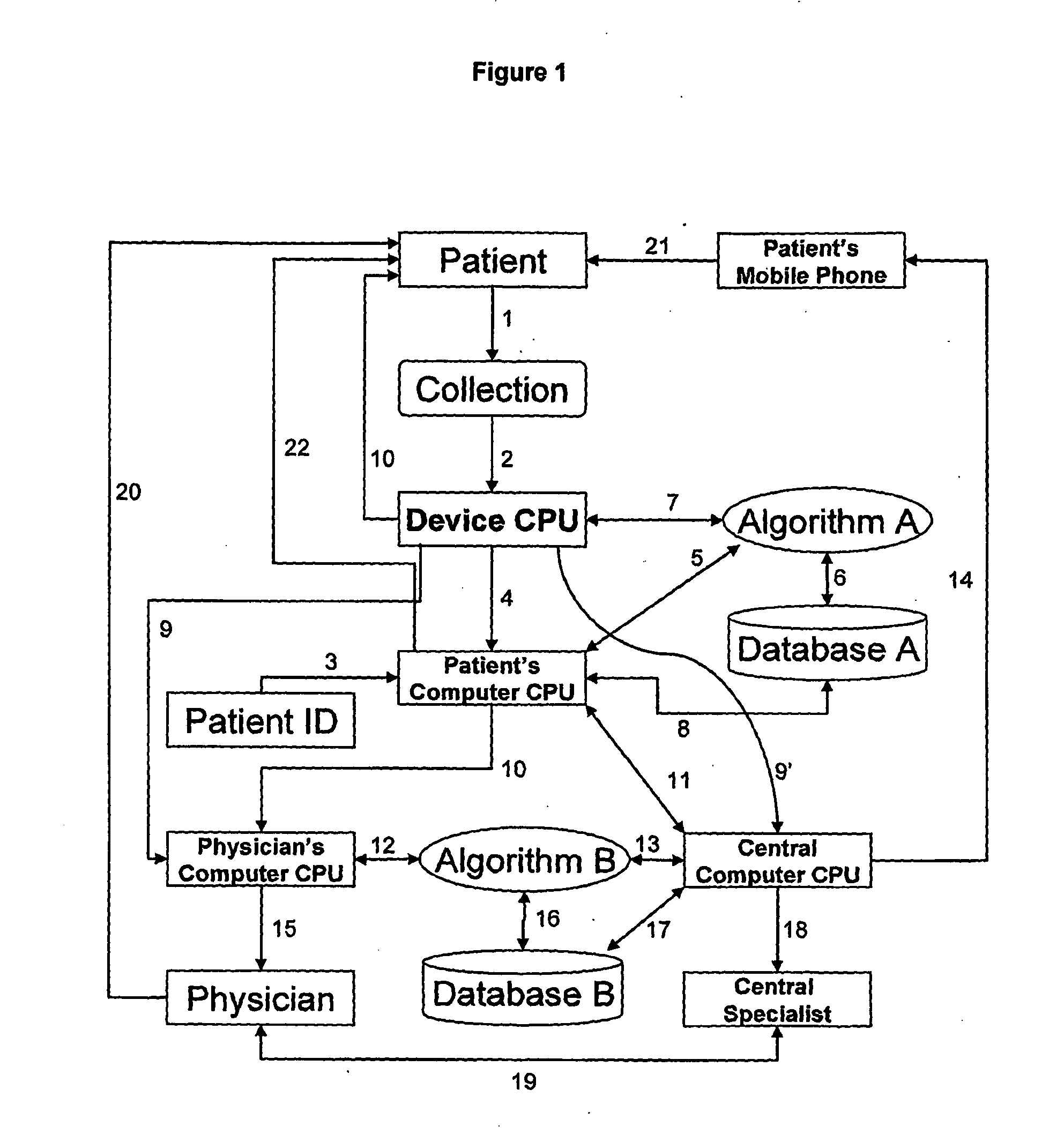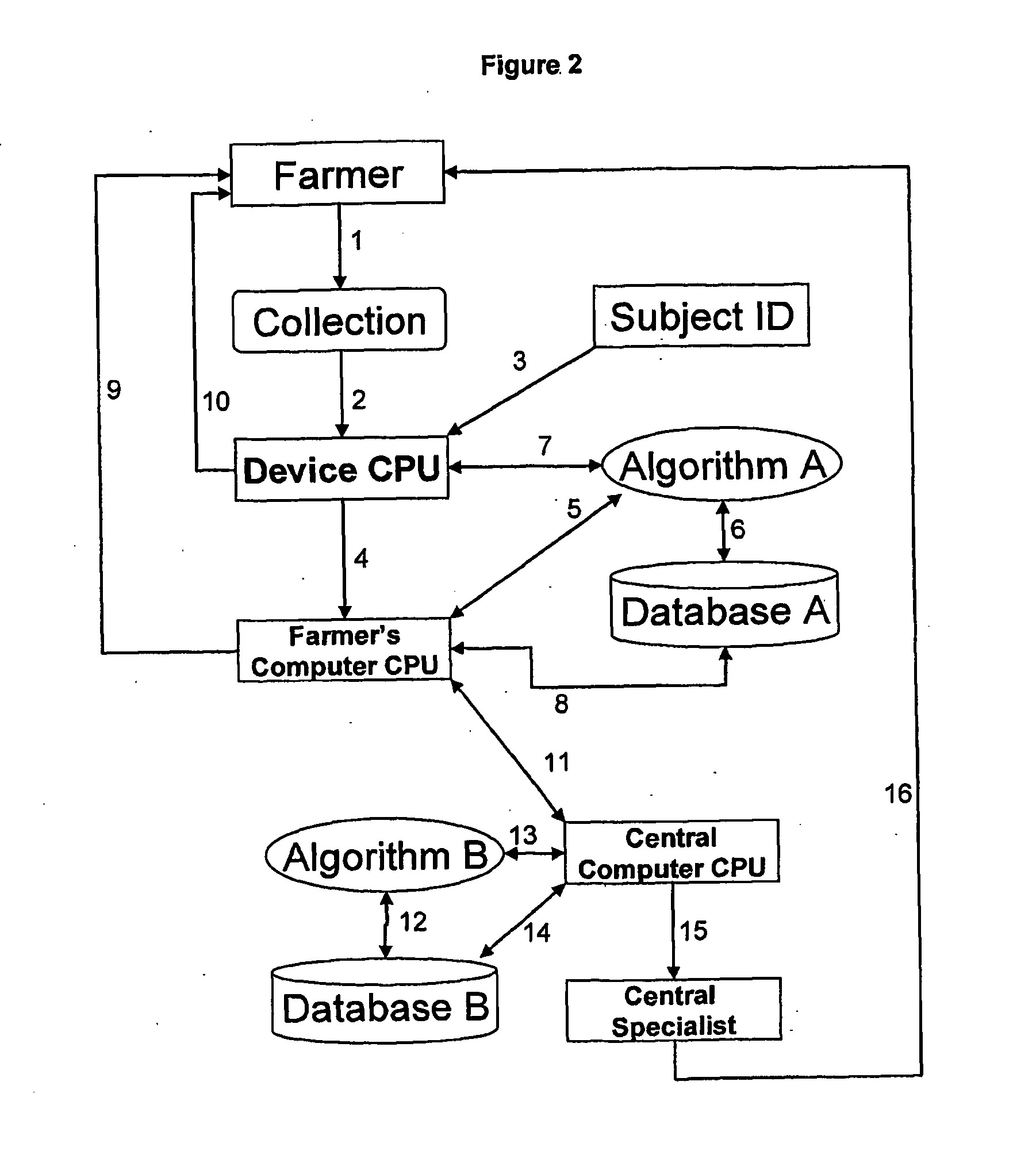Ovulation Cycle Monitoring and Management
a technology of ovulation cycle and monitoring, applied in the field of ovulation cycle monitoring and management, can solve the problems of difficult to accurately monitor fertility, difficult to achieve accurate monitoring of fertility, and most assays can only be performed currently by sophisticated laboratory instruments, etc., to achieve high utility, long shelf life, and great accuracy
- Summary
- Abstract
- Description
- Claims
- Application Information
AI Technical Summary
Benefits of technology
Problems solved by technology
Method used
Image
Examples
example 1
Preparation of polyclonal anti-PdG 213-5 Antibody—Gold Conjugate
[0203]Polyclonal anti-PdG Ab 213-5 was partially purified by octanoic acid precipitation followed by an ammonium sulphate cut. The antibody was diluted 1 / 10 with 10 mM phosphate buffer, pH 7.4. The gold sample was from British Biocell International 40 nm microspere and adjusted to pH 7.8 with 0.02 M K2CO3. The gold solution (10 mL) was added to 100 μL of a 1 / 10 dilution of the Ab+400 μL 10 mM phosphate buffer (pH 7.4) and mixed by vortexing and left for 5-10 minutes at room temperature. Blocking buffer (300 μL of 10% BSA in 10 mM phosphate, pH 7.4 buffer) was added and the solution mixed by vigorous vortexing, and left for 10 minutes. The mixture was then centrifuged at 6,000 rpm for 1 hr, the supernatant was discarded and the precipitate washed 3 times with 1 mL of storage buffer (2% BSA in PBS with azide). The conjugate was resuspended in 1 mL storage buffer. Conjugation of antibodies with microspheres was carried out...
example 2
Methods for Pregnancy Avoidance and Pregnancy Achievement and in Humans
Pregnancy Avoidance
[0204]A growing follicle signals its presence by an increasing daily excretion rate of E1G. Blackwell, L. F. and Brown J. B. Steroids, 57, 554 (1992), incorporated by reference. Ovulation is indicated by a peak in the E1G excretion rate and a rising PdG excretion rate. Blackwell, L. F., et al., Steroids, 63, 5. (1998), incorporated by reference. A corpus luteum is indicated by rapidly rising PdG excretion rates. The normal cycle consists of three sequential phases: (1) an infertile phase (I) of variable length when the ovaries are quiescent (or inactive), which is shown by continuing low rates of both E1G and PdG excretion; (2) a fertile phase (F) of variable length when an egg is growing in its life support system (the follicle), which is indicated by the first statistically significant rise in the E1G excretion rate while the PdG excretion rates remain low; and (3) a second infertile phase (I...
example 3
Algorithm for the Identification of the First E1G Rise
[0209]A method of identification of the first rise in E1G for a normal cycle has been developed that is an adaptation of the Trigg's tracking signal algorithm described in Blackwell L. F. and Brown J. B., Steroids November; 57(11):554-62 (1992). The tracking signal algorithm has been modified to give a prospective detection of E1G rises. The method is performed by first determining four starting parameters. The starting parameters for this algorithm include: i) the initial value of the exponentially smoothed average (ESA(0)), ii) the initial value of the mean average deviation (MAD(0)), iii) the initial value of the forecast error (FE(0)) and iv) the initial value of the smoothed forecast error (SFE(0)). FE(0) and SFE(0) can be set to zero. Typically, ESA(0) and MAD(0) are calculated from the first 6 baseline days of the cycle if there is a baseline period. In this case the tracking signal can only give a warning after 6 days. If...
PUM
 Login to View More
Login to View More Abstract
Description
Claims
Application Information
 Login to View More
Login to View More - R&D
- Intellectual Property
- Life Sciences
- Materials
- Tech Scout
- Unparalleled Data Quality
- Higher Quality Content
- 60% Fewer Hallucinations
Browse by: Latest US Patents, China's latest patents, Technical Efficacy Thesaurus, Application Domain, Technology Topic, Popular Technical Reports.
© 2025 PatSnap. All rights reserved.Legal|Privacy policy|Modern Slavery Act Transparency Statement|Sitemap|About US| Contact US: help@patsnap.com



